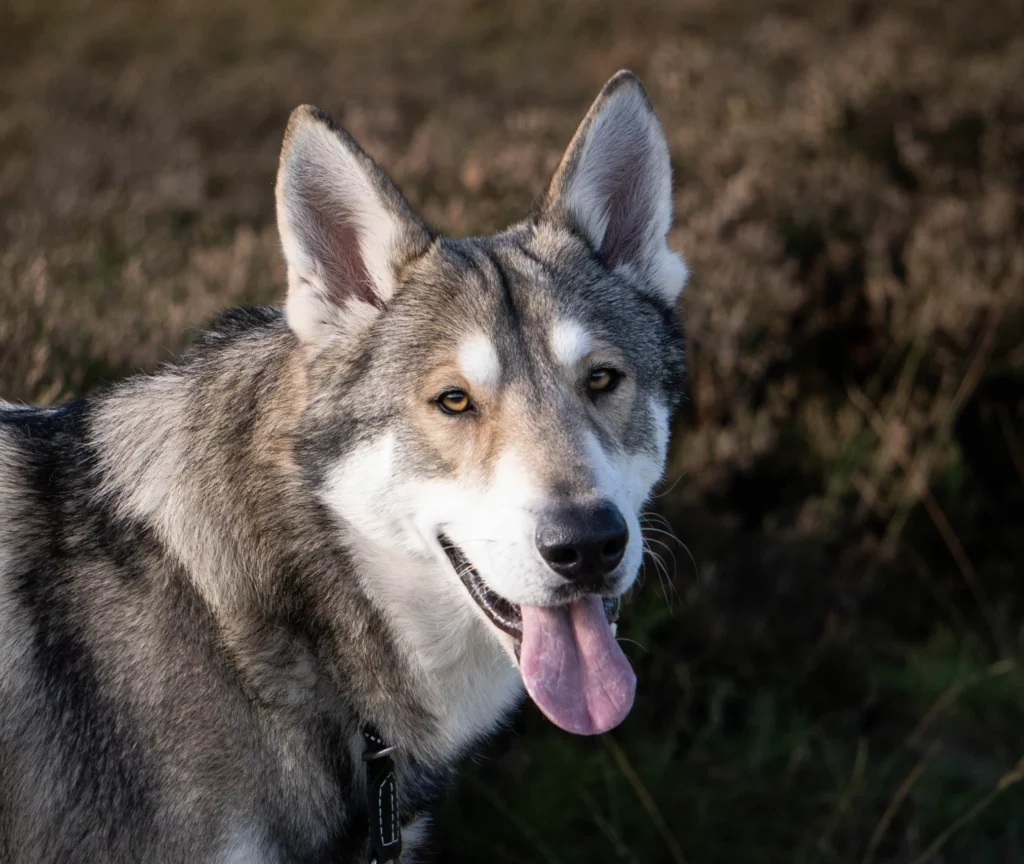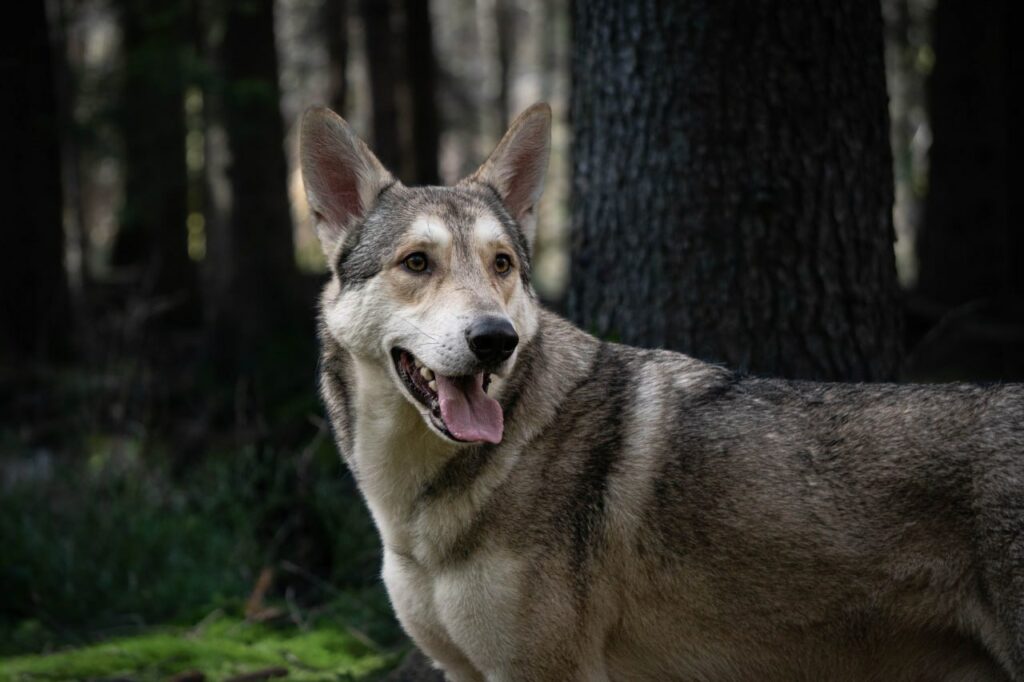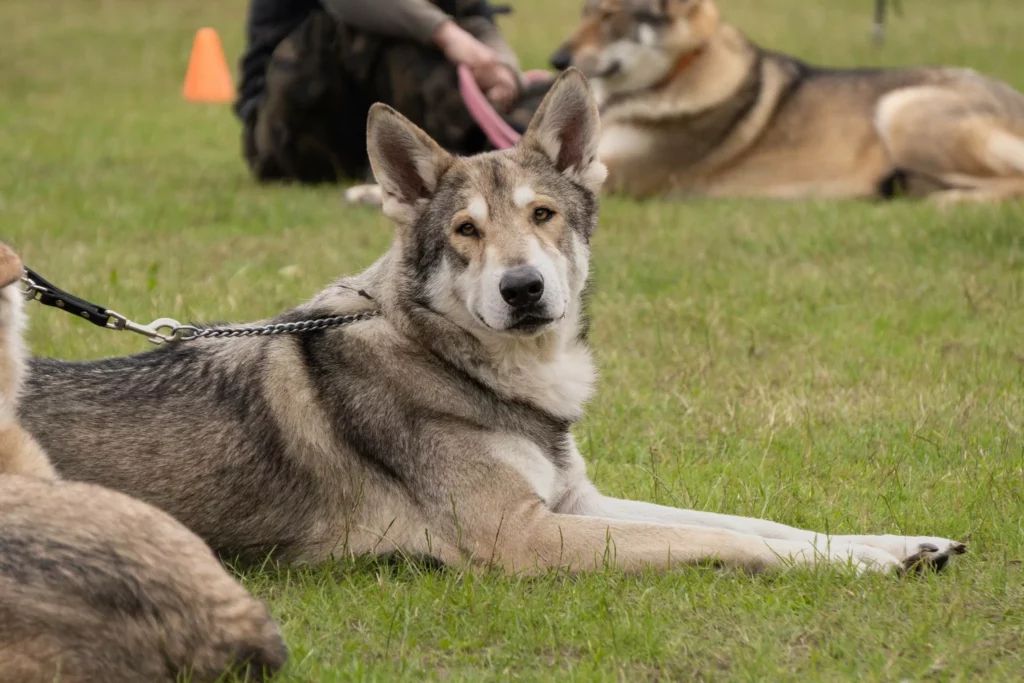
Saarloos Wolfdog
The Saarloos Wolfdog originated in the Netherlands.
The founder of the breed, Leendert Saarloos, was a great fan of German shepherds, but also felt that the breed had lost its closeness to nature.
By crossing the German shepherd Gerard van Transrhenum with the Siberian she-wolf Fleur in 1937 and 1938, he laid the foundations for the breed with the resulting puppies. Through further matings with German shepherds and very strict selection, Saarloos hoped for a healthy, intelligent dog breed that could be used as a working dog.
Contrary to this breeding goal, shyness and scepticism proved to be a trait that could not be contained by selection.
This was further exacerbated by further wolf crosses, which is why the idea of the working dog was considered a failure in the course of breeding.
It was not until 1975, after the death of Leendert Saarloos, that the breed was recognised by the RvB – and the name Saarloos Wolfdog was chosen in his honour.
Since 2012, the Dutch Saarloos Wolfdog Clubs have been able to carry out outcross matings in order to increase the genetic diversity of the breed.
Offspring from such outcross matings, especially from the G1 generation, can deviate from the breed standard in both appearance and temperament.
So far, other pedigree dogs, e.g. a Siberian Husky and a white Swiss Shepherd, as well as visually similar dog types, such as the Northern Inuit, have been outcrossed.
For the first three generations after the outcross, the dogs are closely monitored and regularly evaluated by the clubs.
Only the offspring that are particularly promising are allowed to continue breeding in the Netherlands.
From the fourth generation onwards, they count as purebred Saarloos and can be used for breeding worldwide.
temperament
Saarloo Wolfdogs are lively, active dogs with an independent and self-confident nature.
They are family orientated, very close to their owners and rather sensitive.
Staying alone is a difficulty for many Saarloos.
They can be ignorant or reserved towards strangers and can generally react with scepticism in new situations.
They are intelligent and have a strong will, which is why you should not expect a ‘will to please’.
Their hunting instinct should not be underestimated, but can be controlled with the right behaviour.
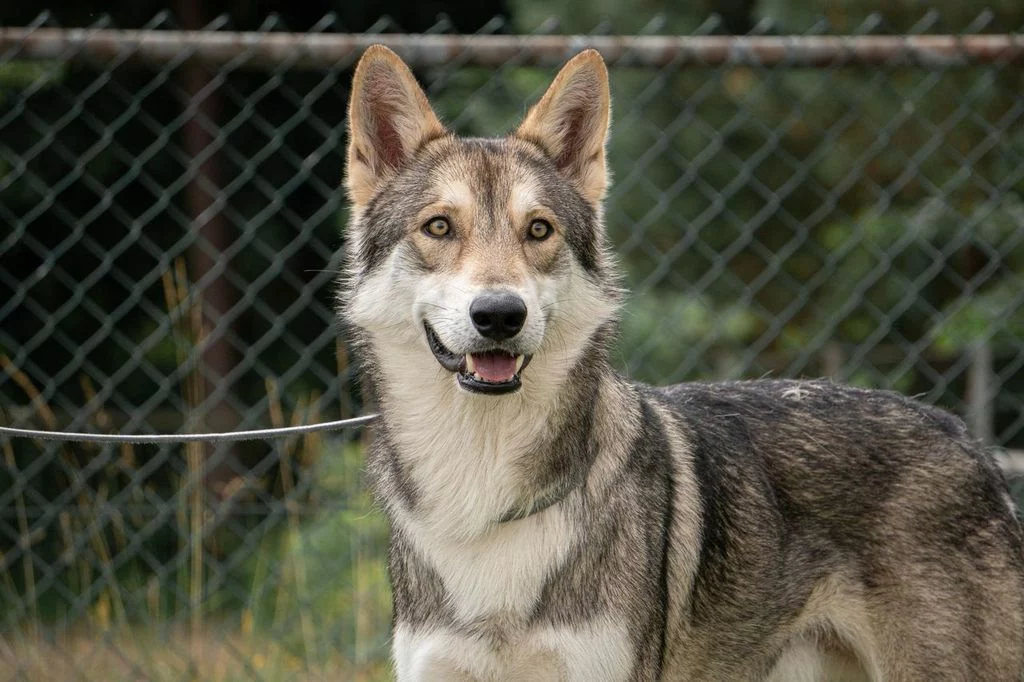
appearance
The Saarloos Wolfdog is a sturdily built breed whose appearance is clearly reminiscent of a wolf.
The visual differences between males and females are clearly recognisable.
The head should give a wolf-like impression, which is particularly emphasised by the almond-shaped, slanted, light-coloured eyes. The ears should be of medium size and well furnished.
The Saarloos is an enduring trotter and its structure should be designed for this characteristic.
Accordingly, they tend to be long-legged, well-muscled dogs with relatively long, straight backs.
The paws should be rather hare-footed with well-developed toes and pads.
The tail should be well coated and carried straight or sabre-shaped.
The coat consists of a stocky top coat and a soft undercoat, summer and winter coats are visually different.
The Saarloos is available in three different colours.
Wolf grey, in all its facets from very light grey to reddish.
Bosbrown, a version of wolf grey influenced by the liver gene, in which all black pigments are lightened to reddish brown.
White, where the colour can range from cream to pure white. White is very rare in the Saarloos.
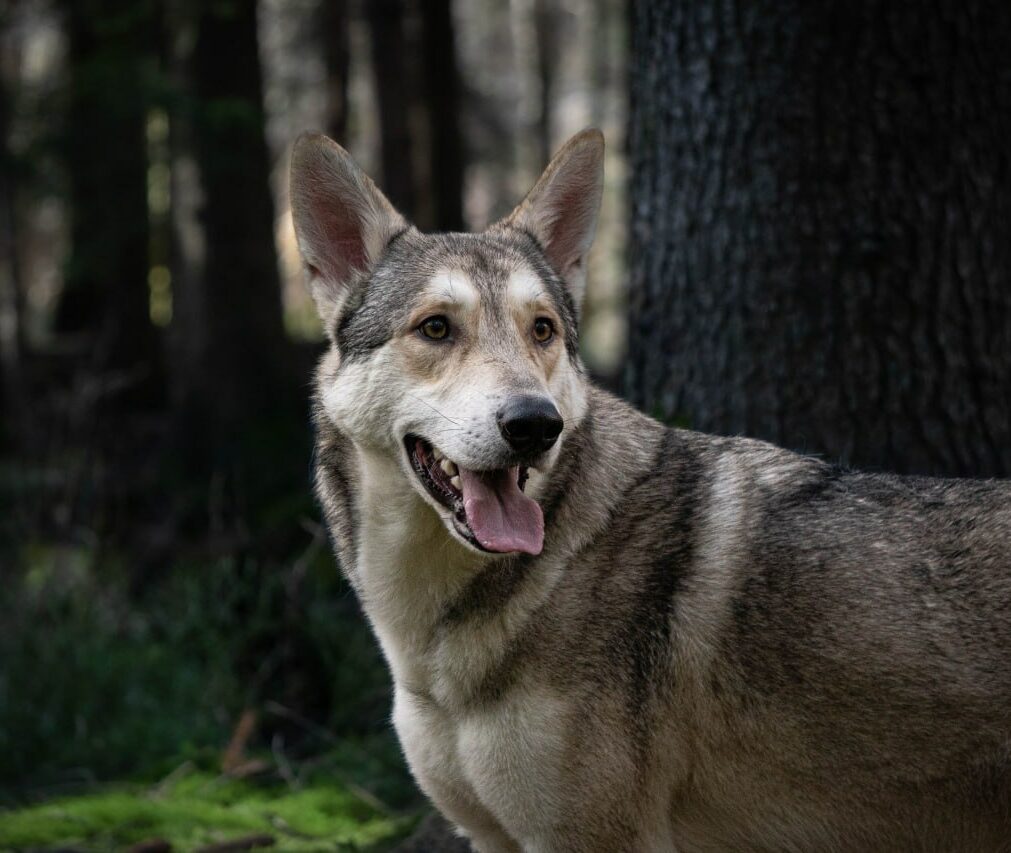
Health & Care
The Saarloos is generally a very healthy, long-lived breed.
Many dogs reach an age of over 12 years.
Most of the diseases that occur in the breed are testable and therefore easy to control.
Typical genetic diseases are DM, HZ and PD.
An examination for HD is also important, as with all large dog breeds.
In addition, an eye examination should be carried out before each litter to rule out diseases such as PRA and cataracts.
The Saarloos Wolfdog does not require extensive grooming.
They should only be brushed regularly during the shedding period to remove loose hair and prevent matting.


